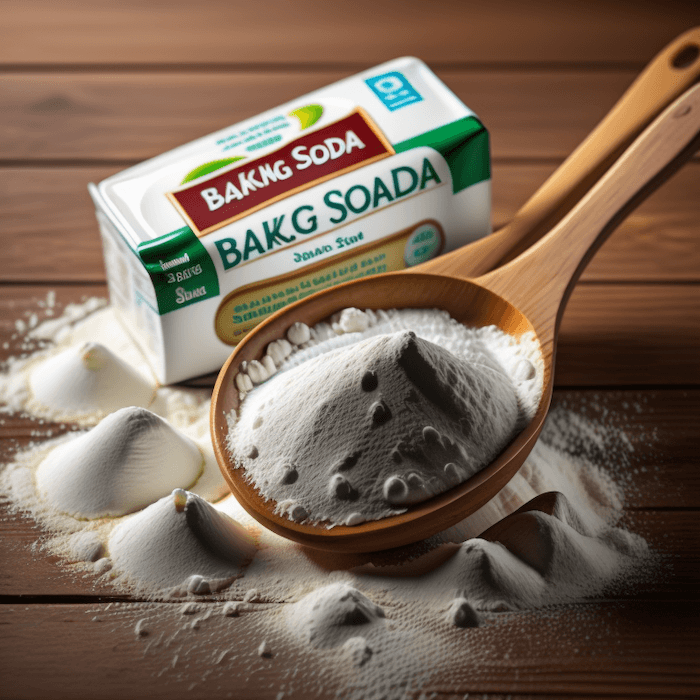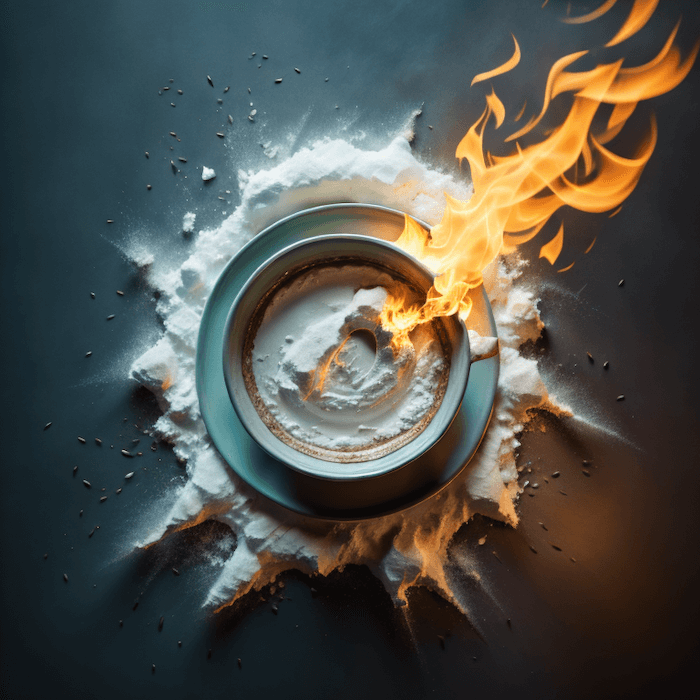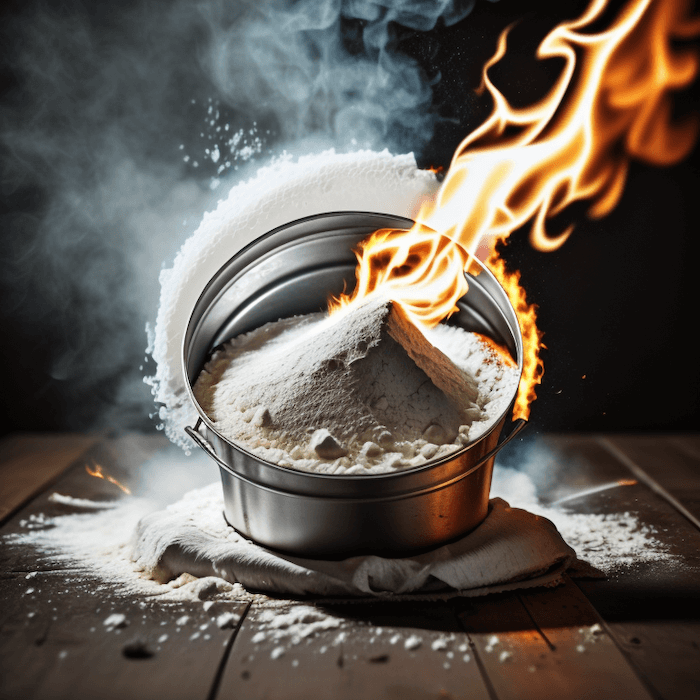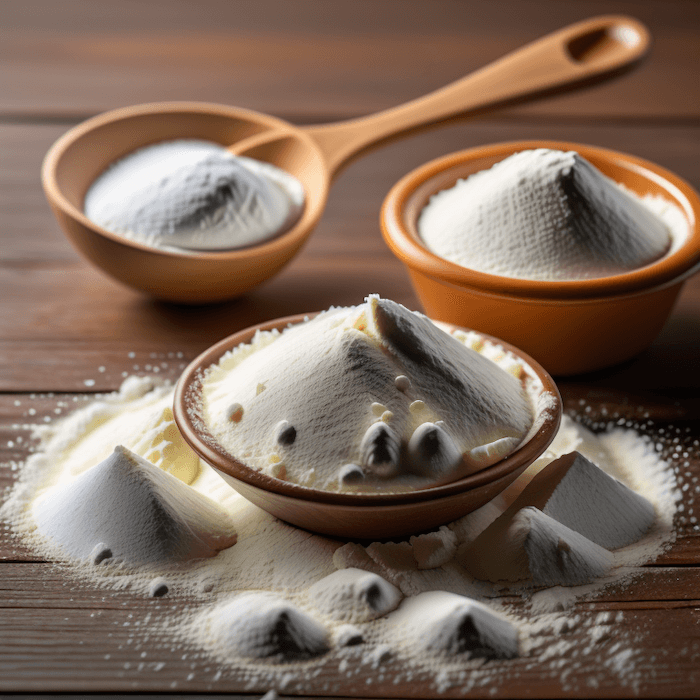Baking soda is a versatile ingredient that can be used for baking, cleaning, and more.
But is there a burning baking soda?

Burning baking soda is a common misconception, as baking soda isn’t flammable and therefore cannot be burned.
Baking soda (sodium bicarbonate) decomposes at high temperatures to produce water vapor, carbon dioxide gas, and sodium carbonate.
The burning of baking soda simply means that it is undergoing decomposition due to the heat being applied to it.
Burning baking soda
Baking soda, otherwise known as sodium bicarbonate, is a versatile substance with many uses in the home and kitchen.
Baking soda cannot be burned in the same way that wood or other combustible materials can be set alight – it emits no heat or light when burned.
Here are 9 key points about burning baking soda:
- Baking soda (sodium bicarbonate) can undergo a thermal decomposition reaction when heated. The chemical reaction is:
2NaHCO3 → Na2CO3 + H2O + CO2
- During this reaction, baking soda breaks down to produce sodium carbonate, water vapor, and carbon dioxide gas.
- The carbon dioxide gas produced is what allows baking soda to be used for chemical volcanoes, inflating balloons, and leavening bread.
- When baking soda is heated strongly enough, the produced carbon dioxide can undergo combustion with oxygen in the air. This is what causes a flame when baking soda is burned.
- For baking soda to produce a flame when burned, it needs to reach a temperature of 50-170°C. At these temperatures, thermal decomposition occurs rapidly.
- Baking soda flames have a faint yellow color and are not as bright or intense as other fuel sources. The flame only lasts briefly.
- Burning baking soda is a relatively safe and simple chemical reaction to demonstrate in science classrooms or at home with adult supervision.
- Safety precautions should still be taken like wearing eye protection and avoiding potential contact with the heated baking soda. It can reach high temperatures quickly.
- Overall, the ability of baking soda to produce flames via decomposition makes for an interesting chemical reaction to observe. But care should be taken if attempting this demonstration.
Explain it to a child
Baking soda is not flammable because it breaks down before it can catch fire.
That said, baking soda can still be useful for certain flame-related projects; its alkaline properties make it suitable for use in some forms of fire safety extinguishing and blocking.
Why baking soda cannot be burned

Baking soda does not burn when exposed to fire.
- This is because the chemical structure of this inexpensive powder leads it to break down before burning.
- Instead, when heated, the baking soda breaks down into other chemicals such as sodium carbonate and water vapor during the decomposition reaction.
- As a result of its low combustion point, baking soda is often used in fireworks as a green-coloring agent without worrying about any explosions or hazards.
Therefore, while it has many uses in cooking and works great as a household cleaner and softener ingredient in detergents; When it comes to fire safety, can rest assured that baking soda won’t be a cause of worry!
Describe the process of decomposition when exposed to heat
When exposed to heat, decomposition is the process of breaking down material into simpler components.
- Through this process, the chemical structure of the material will be broken down while yielding different materials with altered or reduced thermic content.
- This can occur in organic materials such as wood and other forms of biomass when exposed to combustion or biochemical processes such as digestion.
- Decomposing organic materials with heat can introduce additional reactants and catalysts to produce gas, oil, and char which all have different thermal properties.
In some cases, decomposition through heat can result in additional forms of energy being released such as light, electrical energy, or mechanical energy.

Ultimately, the transfer of thermal energy through decomposition enables biological processes to take place at a significantly more efficient rate and can aid in the production of high-value resources like fuels and chemicals.
Can baking soda burn in the oven?
Can baking soda burn in the oven? It might seem counterintuitive – after all, baking soda is used as a common ingredient in recipes like cookies or cakes.
However, if left in the oven for too long, it can start to brown and harden and even reach temperatures hot enough to cause noticeable burning.
- Baking soda can also pick up flavor from other ingredients if food is improperly stored alongside it, leading to an unpleasant taste once cooked.
- To avoid any mishaps with your next batch of homemade goodies, keep an eye on the oven temperature and pay close attention to how long items like baking soda stay inside.

With a little bit of caution, you can sit back and enjoy your freshly baked treats without worrying about undesired burning!
Does baking soda extinguish the fire?
Baking soda has been touted as a great way to put out fires, but surprisingly, this is not always the case.
While baking soda can be used effectively on small kitchen fires, it is sadly not effective against anything beyond that.
On large fires, baking soda cannot keep up with the amount of fuel and heat being produced by the fire.
In these cases, it is better to rely on a fire extinguisher or call the fire station for help.
It’s important to remember that while baking soda could work if you’re caught in a pinch, other methods tend to be much more reliable and should be used whenever possible.
So while baking soda may not create fire, there are plenty of ways it can still contribute to a safe environment.
Article Sources
Jacks of Science sources the most authoritative, trustworthy, and highly recognized institutions for our article research. Learn more about our Editorial Teams process and diligence in verifying the accuracy of every article we publish.
